The essential guide to retrieving flies from a boat on stillwaters
Discover the effect of drifting, the angle and distance of casts, sink rates, leader lengths and more.
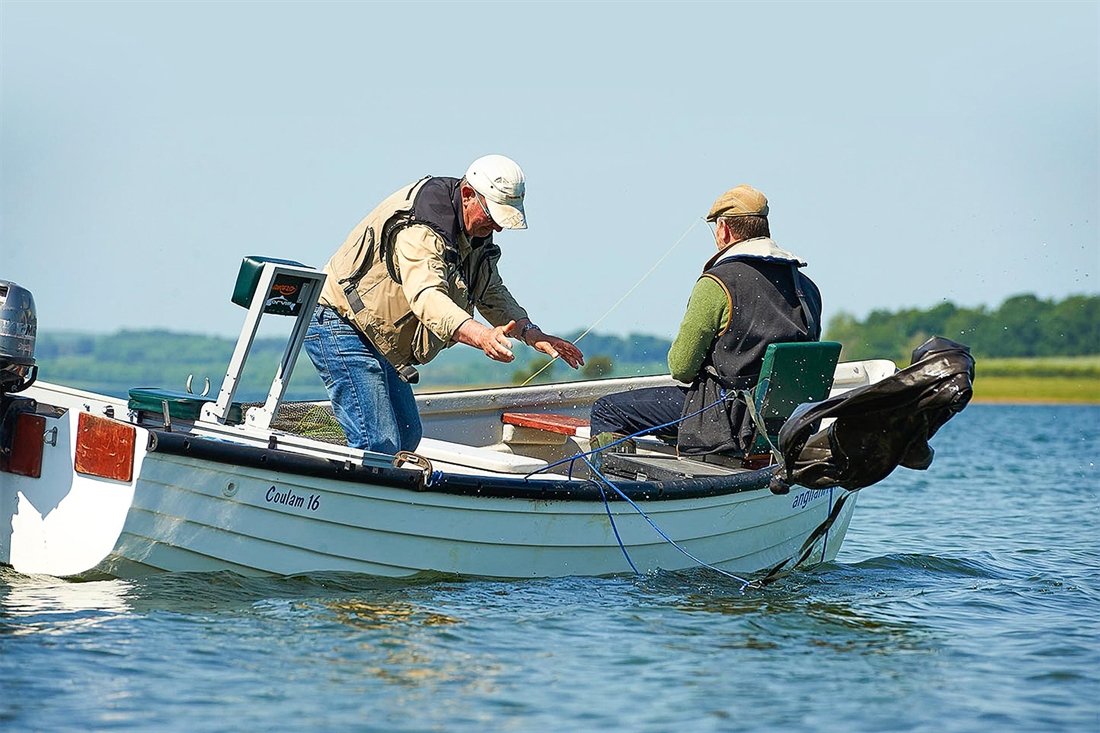
I began as a bank angler. So when I first got into a reservoir boat and saw an anchor, I assumed that you rowed to an area, dropped anchor and fished from a static boat. Fishing at anchor allowed me to use all the techniques and retrieves I had learned when bank fishing, but I found it harder to detect gentle takes. I noticed that some boats weren’t anchored, they were drifting with the wind. When I tried this, the boat drifted quickly and erratically, making it difficult to control my flies. I hadn’t noticed that the drifting boats were using drogues to control their drift speed and their angle to the wind. Using a drogue, it became easier to control my flies, but it took me some time to comprehend the complex relationship between wind speed, drift speed, retrieve rate and fishing depth. Understanding that relationship is essential for consistent success when fishing from drifting boats.
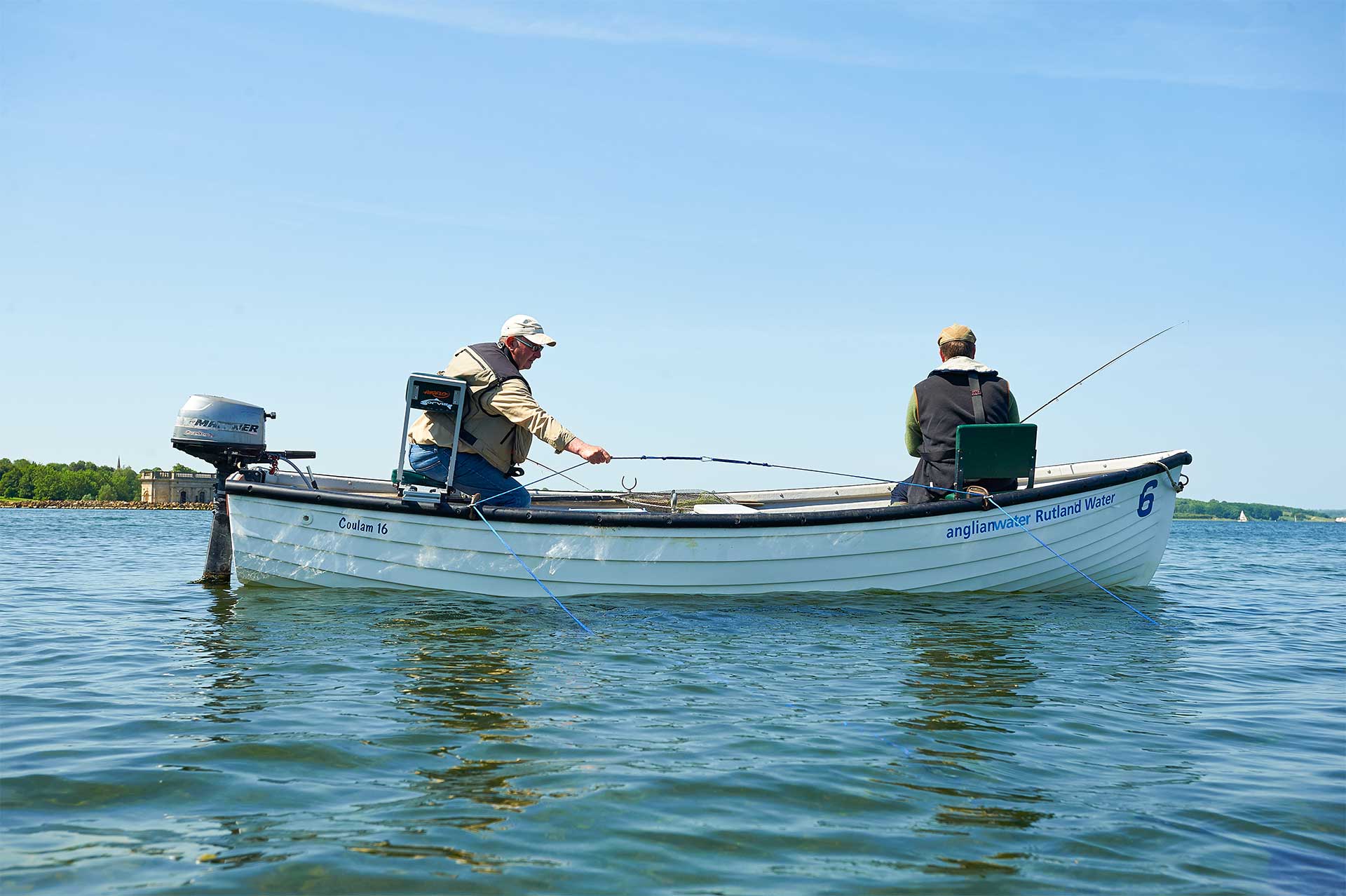
Fishing at anchor…
Allows you to access water unavailable to the bank angler. Retrieve speed and depth are easier to control than from a drifting boat.
Repeated casting in one area may drive fish away, so change areas regularly.
Waves rock the boat, reducing your ability to detect gentle takes.
A constant retrieve rate is hard to maintain if the boat swings around the anchor — using anchors at the bow and stern solves this problem to a degree.
You cannot anchor over deep water. But drifting boats can fish these areas easily.
Drifting with the wind
Drifting downwind with the boat at 90° to the wind and slowed by a drogue is the traditional loch-style method. Floating lines are used to present either wet-flies at shallow depths or dry-flies on the surface. Casting downwind or at a slight angle to the wind, it is vital to understand the effects of your retrieve rate.
If slack line accumulates under the rod tip, you are not moving the flies at all; they are static. Increase the retrieve speed to match the speed of the drift and your flies are still static — all you are doing is keeping in touch with the flies but not moving them.
Any further increase in retrieve speed will cause the flies to move relative to the water. Retrieving just to keep in touch with the flies without moving them works well for dry-flies, imitative nymphs and buzzers. It is not very effective for lures that require an active retrieve to work well.
Sinking lines allow our flies to fish much deeper, but their interaction with the drifting boat requires careful thought.
Factors affecting retrieve speed
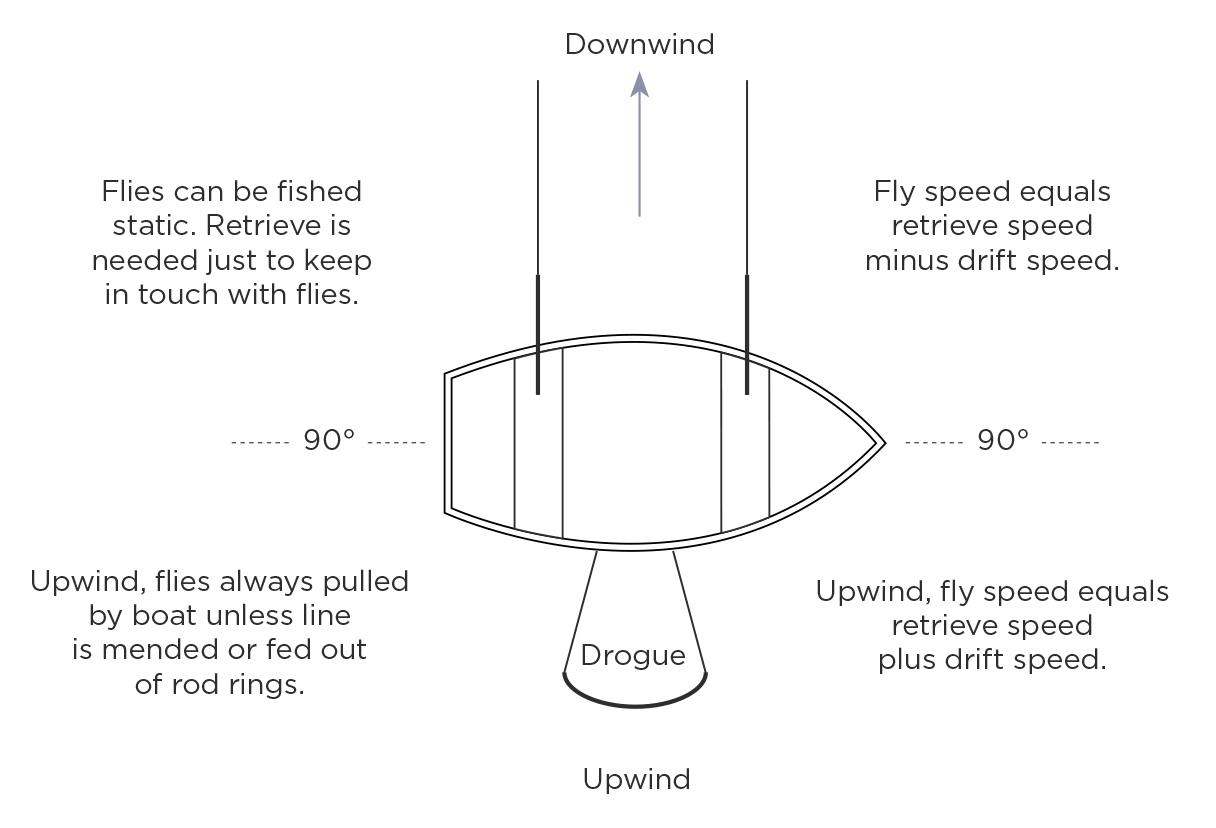
Drift speed is increased when two anglers sit on high boat seats. It is lowered when a single angler is sitting on the thwarts.
Angle of the cast: Without a retrieve, a cast downwind results in no fly movement.
Fishing the area between directly downwind and 90° to the wind requires a retrieve to keep in touch with the flies (see diagram, above). This retrieve varies from fastest when the cast is directly downwind to slowest when the cast is 90° to the wind.
The speed of the flies is the speed of retrieve minus the speed of the drift.
Fishing the area between 90° to the boat and directly upwind the flies are pulled by the boat at speeds varying from slow at 90° to fastest when the fly is trailing directly behind the boat.
The speed of the flies is the speed of retrieve plus the speed of the drift.
To fish flies static you must cast forward of the 90° line. Any flies cast behind that line will be pulled by the boat even if the angler is not retrieving. To present a static fly behind the 90° line you must compensate for the speed of the drift by mending or feeding slack line.
As the boat drifts the angle constantly changes and you must vary your retrieve rate to present your flies at a constant depth and speed.
The rapid retrieve that moved your flies slowly when they were in front of the boat will move them very quickly once they have passed the 90° line and the drift speed of the boat is added to your retrieve.
Factors affecting retrieve depth
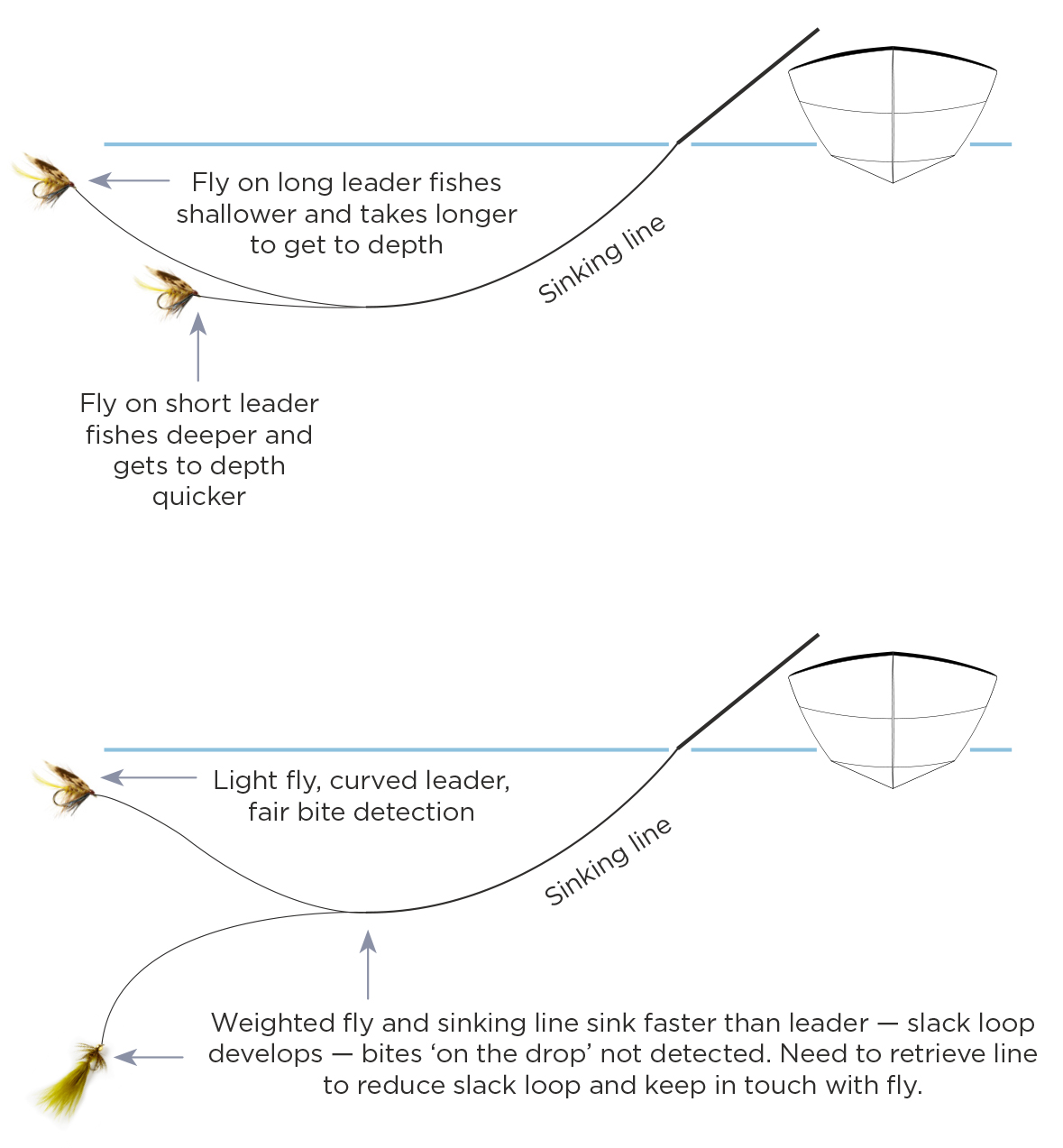
Casting distance and fly-line sink rate: Fishing from the bank or from anchor, your sinking line fishes deeper if you give it more time to sink. In a drifting boat it’s not that easy. Casting downwind you are drifting towards the sinking line, which you may overtake before it has sunk to the depth where you want to fish. Casting further helps, you’ll still overtake the line but at least part of it will have got down to the desired depth, allowing you a short retrieve at that depth. A faster sinking line allows the boat less time to overtake the line resulting in a longer retrieve at fishing depth. Using a faster sinking line and casting further produces the longest retrieve at the required depth.
Fly weight: Fishing with a floating line, the weight of the flies affects the depth of your retrieve, although ultimately leader length limits depth. Fishing weighted flies on sinking lines results in fly and fly-line sinking faster than the leader producing a slack loop that compromises bite detection (see diagram, above). You must retrieve to get direct contact with the fly or you will miss takes on the drop due to slack line. Unweighted flies follow a curved path as the fly-line sinks, not ideal for detecting bites but better than the loop of slack caused by weighted patterns.
Leader length: To fish flies at depth on a floating line requires a leader at least 1.5 times as long as the depth at which you want to fish. If you wish your flies to fish close to the depth of your sinking line, then you need to fish them on a short leader. A long leader used with a sinking line results in the light flies fishing shallower than the heavy line and makes it hard to get your flies deep before your boat overtakes them. You may want the flies to gradually dive towards the bottom following a curve, but be aware that the curve compromises bite detection.
| Fishing the curve |
|---|
|
As a fly drifts round from 90° (off the bow or stern) to directly upwind its speed progressively increases and this may cause takes often credited to fishing the fly in a curve. The fly travels in a curved path, but it is also speeding up. It’s hard to think of any natural reason a trout should find a fly retrieved on a curve to be more attractive. Accelerating flies appear to be escaping, and this is more likely to be the stimulus for the strike. The acceleration also lifts the flies towards the surface possibly triggering a take similar to the induced take on rivers and the takes that occur when flies are lifted prior to a back cast. Again, the fly appears to be escaping. |
Fishing on the hang
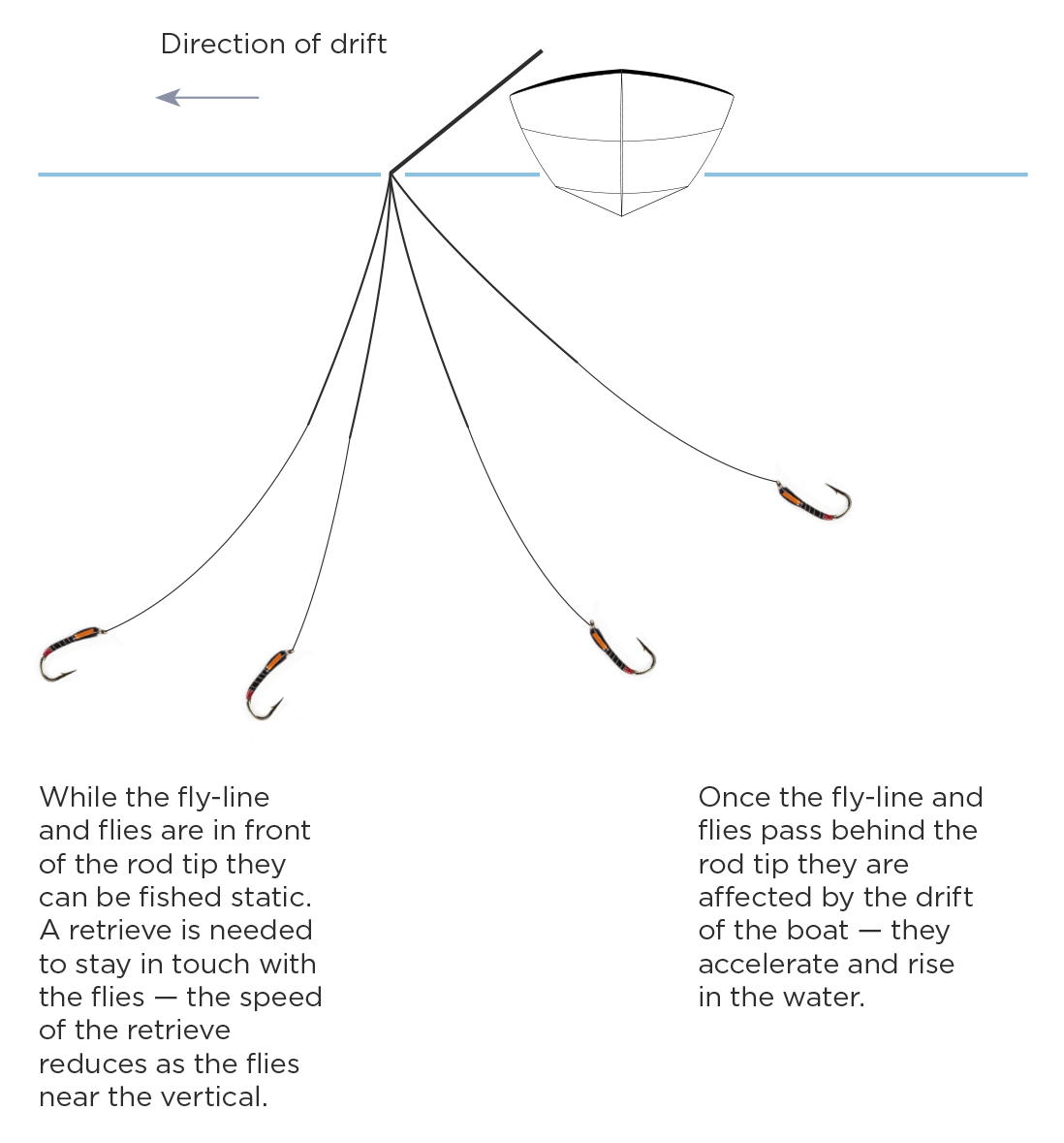
If you leave the flies static or retrieve them slowly, the boat will overtake the fly-line and flies. The longer you leave the flies on the hang the more likely it is that line and flies will speed up and rise in the water as the boat pulls them. As you drift towards your flies, there will be a point when they are static in the water almost beneath the boat, but if the boat is drifting at speed, they won’t remain static or at a constant depth for long.
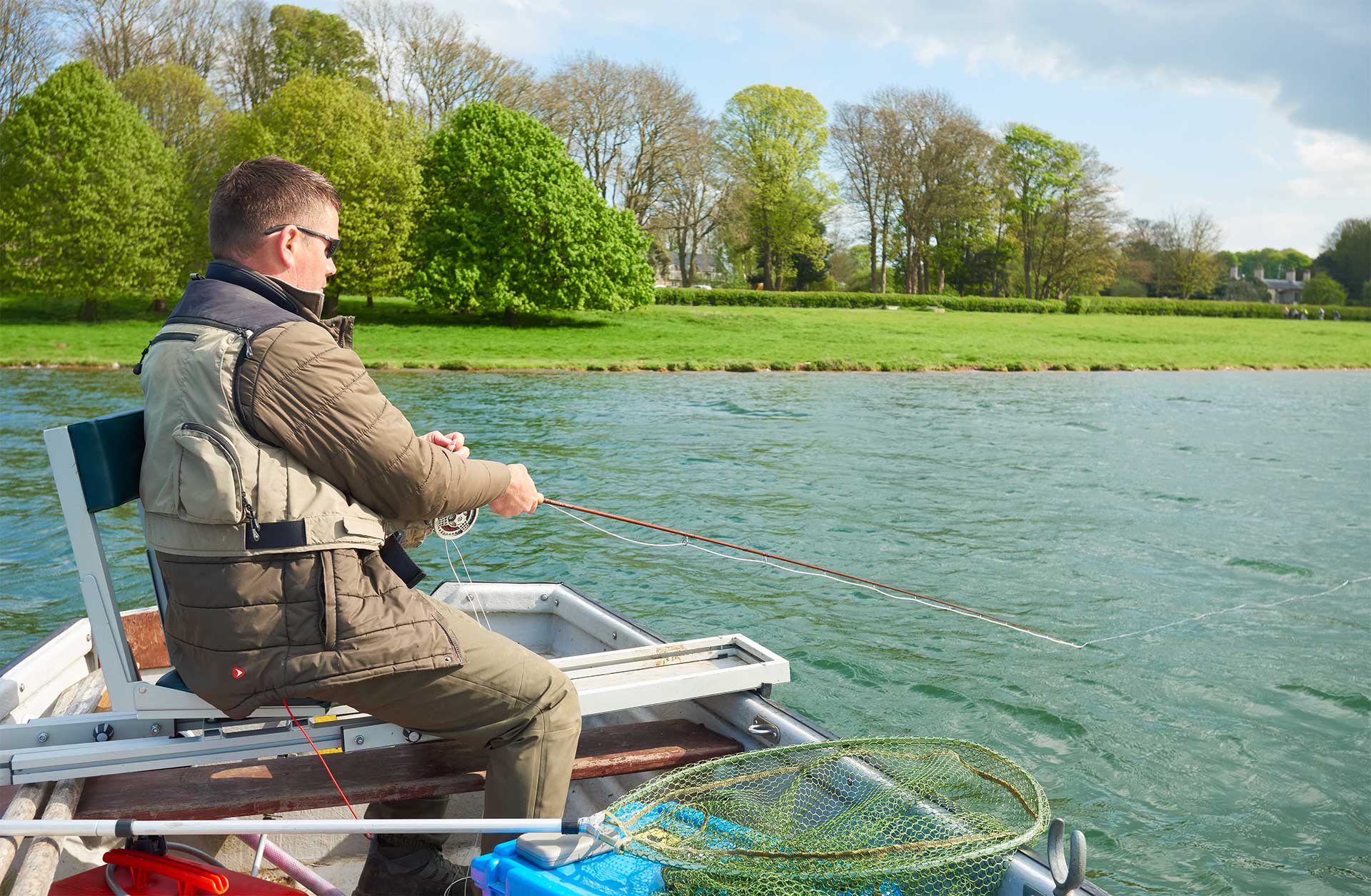
Conclusion
Fishing from an anchored boat is similar to fishing from the bank. Once the boat is moving everything changes, the depth, speed and direction of your retrieve are all affected by the boat’s motion. Drift speed, sink rate of line, leader and flies, and casting distance are important, but the most important variable is the angle of the cast relative to the direction of the drift. Failure to account for casting angle produces retrieves inconsistent in speed, depth and direction. Understanding how drift affects retrieve is second only to fish location in the boat angler’s skill set.





